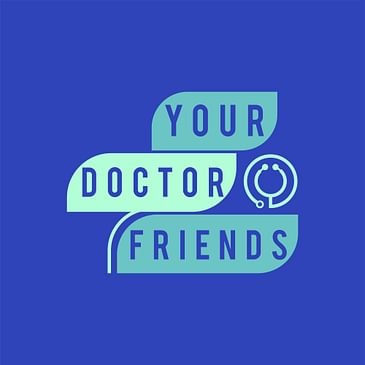Have you ever been unable to breathe through your nose?
Isn’t it THE WORST?? We’ve talked on this podcast with other experts (including Dr. Dave Stukus, pediatric allergist about seasonal allergies and our beloved pharmacist Greg Castelli about OTC meds to try for cold symptoms)- but what do you do when you’ve tried the “regular” stuff to unclog your nose, and IT’S NOT WORKING???
According to University of Michigan Medicine, nasal and sinus disease affects 31 million Americans, and accounts for 16 million outpatient visits annually in the US.
The obstruction of airflow can come from a variety of sources, and the common factor is usually inflammation and swelling of the mucosal lining of the nasal and sinus passages. Sometimes other things can physically obstruct the flow of air, like polyps, or a deviated septum, or sometimes, (if you’re Julie's big sister and its the mid-1980s) a Mike and Ike.
So what should we do if we find ourselves mouth-breathing?? What if the neti-pot is a NETI-NOT? (and you’re full of NETI-SNOT??)
Welcome to our esteemed guest, Otolaryngologist, Dr. Michelle Fisher!
- Dr. Fisher is a board certified Adult and Pediatric Otolaryngologist who practices near Tampa, FL at Florida ENT and Allergy.
- She studied at Emory for UG, Rush for med school (with Julie!) and did residency at Medical College of Georgia.
- She has authored several publications in the field of Otolaryngology - Head and Neck Surgery and has lectured at conferences and national meetings.
- She is also an all-around badass and lovely human being :)
Key topics in this episode include:
What are the main root causes of nasal passage obstruction?
What kinds of physical obstructions get in the way of keeping the nasal passages open?
What are nasal polyps? Why do they occur?
How much does inflammation come into play? How can we treat it/prevent it?
What is chronic sinusitis? Who gets it? What are the risk factors?
What causes it? Bacteria? Viruses? Fungi?
Does sinusitis always need antibiotics?
How can we treat it? When is surgery indicated?
What is a deviated septum? Why does this happen? How can it be treated?
What are some of the simple, in-the-office treatments/procedures that ENTs (Otolaryngologists) can do to treat these issues?
Learn more about Dr. Fisher on her profile, HERE.
Dr Fisher recommends checking out the American Academy of Otoloaryngology - Head and Neck Surgery website for great resources.
For more episodes, limited edition merch, or to become a Friend of Your Doctor Friends (and more), follow this link!
Also, CHECK OUT AMAZING HEALTH PODCASTS on The Health Podcast Network
Find us at:
Website: yourdoctorfriendspodcast.com
Email: yourdoctorfriendspodcast@gmail.com
Call the DOCLINE on 312-380-5005 and leave us a message. We will listen and maybe even respond/play it on the show!
(Disclaimer: we will not answer specific medical questions or offer medical advice. Consult your healthcare professional with any and all personal health questions.)
Connect with us:
@your_doctor_friends (IG)
@yourdoctorfriendspodcast1013 (YouTube)
@JeremyAllandMD (IG, FB, Twitter)
@JuliaBrueneMD (IG)
@HealthPodNet (IG)


